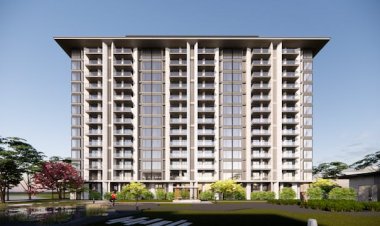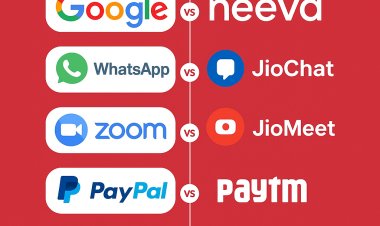How AR and VR Technologies Help Reduce Operational Costs in Real Estate
AR and VR technologies are revolutionizing the real estate industry by significantly reducing operational costs. These technologies enable virtual property tours, streamline design and construction processes, enhance marketing materials, improve maintenance and repairs, and facilitate efficient training and remote collaboration. As a result, real estate companies can operate more efficiently and cost-effectively, leading to greater profitability and success.

Augmented Reality (AR) and Virtual Reality (VR) technologies are proving to be powerful tools in the real estate industry, not only enhancing the customer experience but also significantly reducing operational costs. Through various innovative applications, AR and VR can streamline processes, minimize errors, and improve efficiency, contributing to overall cost savings for real estate companies. Here's how AR and VR can help reduce operational costs in real estate.
Virtual Property Tours
One of the most impactful ways AR and VR reduce costs is through virtual property tours. Traditional property tours require significant time and resources, including travel expenses for agents and potential buyers, preparation of properties for viewing, and scheduling coordination. With VR, potential buyers can experience a 360-degree virtual tour of a property from anywhere in the world. This reduces the need for physical visits, saving time and reducing travel-related expenses. For the real estate company, this means fewer resources spent on showing properties, leading to substantial cost savings.
Enhanced Marketing Materials
AR VR app development companies create interactive and immersive marketing materials that are more engaging than traditional brochures and flyers. AR can overlay digital information onto physical marketing materials, providing interactive elements such as 3D models of properties, detailed floor plans, and visualizations of property modifications. These enhanced materials reduce the need for frequent printing and distribution of physical brochures, significantly cutting down marketing costs. Additionally, digital marketing campaigns using AR and VR can reach a wider audience more effectively, increasing the return on investment.
Streamlined Design and Construction
In the property development phase, AR and VR technologies can streamline the design and construction processes. VR allows architects and developers to create virtual models of new developments, enabling stakeholders to visualize the project before construction begins. This can help identify potential design flaws and make necessary adjustments early in the process, reducing costly changes and delays during construction. AR can assist construction teams by overlaying digital plans onto the physical site, providing precise guidance and reducing errors. This streamlined approach minimizes waste, accelerates project timelines, and lowers overall construction costs.
Efficient Training and Onboarding
Training new employees in the real estate sector can be time-consuming and expensive. VR offers an immersive training environment where new hires can learn about company procedures, property details, and sales techniques in a realistic, virtual setting. This reduces the need for extensive in-person training sessions and allows new employees to become productive more quickly. Additionally, VR training can be standardized, ensuring consistent and high-quality training across the company. This efficiency in training processes translates to reduced training costs and faster onboarding times.
Improved Maintenance and Repairs
AR can play a crucial role in the maintenance and repair of properties. Maintenance teams equipped with AR devices can access digital overlays of building schematics and instructions directly on-site. This immediate access to information can improve the accuracy and speed of repairs, reducing downtime and preventing minor issues from escalating into major problems. Efficient maintenance reduces operational disruptions and lowers the long-term costs associated with property upkeep. Furthermore, AR can assist in routine inspections by highlighting areas that require attention, ensuring timely and cost-effective maintenance.
Remote Collaboration
AR and VR technologies facilitate remote collaboration among real estate professionals, architects, and clients. Virtual meetings and walkthroughs can replace many in-person interactions, saving time and travel expenses. AR can be used to share real-time data and visualizations during remote discussions, enhancing communication and decision-making. This remote collaboration capability ensures that projects stay on track and within budget, reducing the costs associated with miscommunication and project delays.
In conclusion, AR and VR technologies, developed and implemented by AR VR app development companies, offer numerous ways to reduce operational costs in real estate. From virtual property tours and enhanced marketing materials to streamlined design processes, efficient training, improved maintenance, and remote collaboration, these technologies provide real estate companies with the tools to operate more efficiently and cost-effectively. As the adoption of AR and VR continues to grow, their impact on reducing operational costs will become even more pronounced, contributing to the long-term profitability and success of real estate companies.
Also read: Transforming Industries: The Impact of AR/VR Application Development Companies in India































